
It is not a coincidence that the year, 2017, marks the 70th anniversary of both Ferrari and the historic Gilco brand. It’s the natural consequence of a joint all-Italian piece of history, one that saw the two enterprises start together and tightly cooperate for many years.
It was 1947 when Gilberto Colombo set up his operations to design and develop new ground-breaking, ultra-light car frames, drawing on his precious experience, especially his work with the aviation industry.
Among further applications, he also started producing rational tubular furniture, as previously produced by his father’s company, on Bauhaus designs, since the 1930’s.
While Enzo Ferrari was turning his machine tool production business into a racing car development firm, thus launching the Ferrari brand, Gilberto Colombo, after transforming his GC Automotive Application unit into Glico Autotelai (Gilco car frames), founded the Gilco brand.
Gilco (obviously an acronym for Gilberto Colombo) has since signed an incredible series of innovative ideas that revolutionised quite a few of the basic concepts on which racing car development was based. His new sophisticated design for industrial production gave a great impulse to some then uprising Italian companies that are still among the most important worldwide today.
Among these, on top of major car brands like Ferrari, Maserati, Alfa Romeo, Lancia, Zagato and more, are the most important bicycle companies: Ernesto Colnago, Columbus and Cinelli; and nautical companies: Cantieri Folli and Lillia, whose most valued, world championship winning Star sailboats were designed by Gilberto Colombo. On top of all that, interesting architectural designs, and, obviously, tubular furniture.
Today Gilco is a historical brand, strong of a prestigious archive of original designs, but also engaged in building the future. An important part of the legacy of Gilberto Colombo, on top of said archive, is Trafiltubi, the company he founded to produce super-high-performance tubes aimed at extreme applications and whose enduring high-quality production bears witness to its motto: “il tubo non tradisce mai”. (a tube will never let you down).

The Land Cruiser is Toyota’s longest continually produced model. From its start as a utility vehicle built during a period of economic gloom and uncertainty after the Second World War, it is now a well-equipped, luxurious and highly capable prestige SUV.This book covers all the changes that have taken place over the years to provide a complete history of the Land Cruiser’s extraordinary heritage. The coverage includes the Land Cruiser’s outstanding success in some of the toughest environments of the world, and what it takes to modify it to meet the toughest of conditions.Author Nigel Fryatt follows the extensive range history of the Land Cruiser from its earliest models, through the utility models, right up to the prestigious versions that exist today. The author draws on his considerable experience of both on-road and off-road testing to provide his informed professional judgement on this extraordinary vehicle.
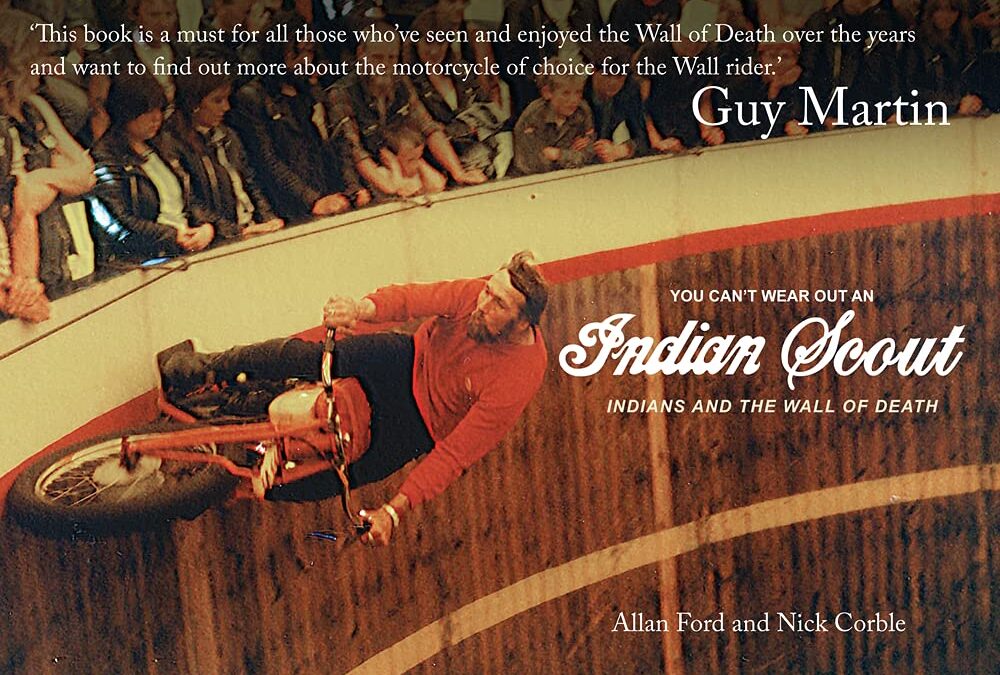
The Indian Scout motorcycle is the favoured mount for Wall of Death riders all over the world. Drawing upon modern and archive material, Wall of Death owner and rider Allan Ford and author Nick Corble explore the reasons behind this relationship and bring the story of the Wall up to date, including behind the scene details of the latest Wall of Death speed record achieved by Guy Martin. It’s a story that spans more than a century, starting with experiments with motorised bicycles in the 1890s, passing through two world wars and ending by looking to a future where Indians continue to be restored and ridden on the Wall. As this book makes clear, the relationship between Indians and the Wall of Death is one that will never be broken. As Sammy Pierce, at one time the world’s largest Indian motorcycle dealer once put it:You can’t wear out an Indian Scout,Or its brother the Indian Chief.They’re built like rocks to stand hard knocks,It’s the Harleys that cause the grief.
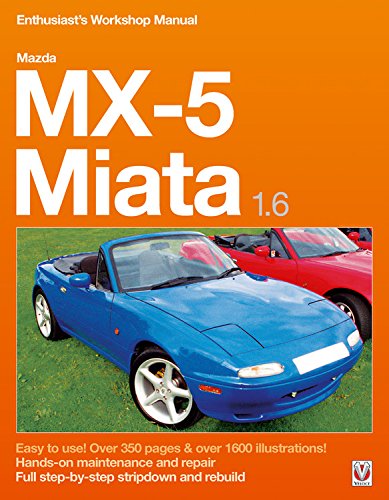
With open-topped styling and performance evocative of the classic sportscars of the 1960s, the Mazda MX-5/Eunos had to be a huge international success – and that’s exactly what it’s become. Now a familiar sight on the streets and boulevards of the world, the MX-5 is owned by real enthusiasts, the kind of people who will want to have hands-on involvement with the maintenance and repair of their prized possession. For those enthusiasts, here is what we believe to be the best, easiest to use workshop manual in the world.
Author Rod Grainger set out to create a new kind of owner’s workshop manual – friendly, easy to understand, easy to use, and yet more detailed than any other manual currently available: two years later, the Mazda MX-5 Miata 1.6 Enthusiast’s Workshop Manual was the result. Rod, and fellow enthusiasts Pete and Judith, stripped down an MX-5 in an ordinary domestic garage using ordinary tools and, in the process, took over 1,500 step-by-step photographs. The result of all this work is a superbly detailed text which passes on to the reader every detail of important jobs, including how problems can be overcome without resorting to special tools. This manual even tells the reader the size of nuts and bolts so they can start work with the right tools and all clearances and torque values are given in the text as the reader needs them. At paragraph level, a unique symbol system provides cross-references or tells the reader that there are helpful associated photos, drawings and tables. The dreaded words “reassembly is a reversal of the dismantling procedure” are banned, and every task, from changing a bulb to rebuilding the gearbox, is described in full. Besides detailed coverage of maintenance and repairs, this manual includes advice on rustproofing, cosmetic tuning and mechanical tuning. Rod’s manual was prepared with the assistance of Mazda, and it applies to all 1.6 litre models built between 1989 and 1995. Most of the manual is relevant to later 1.6 litre models, too.
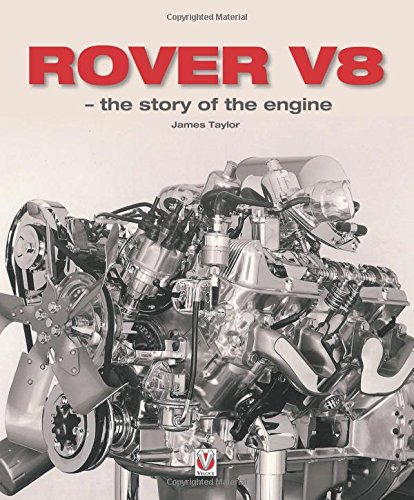
Rover V8 the Story of the Engine tells the fascinating story of the engine that created a legend in its own lifetime. Starting life as a General Motors design in 1961, but withdrawn three years later in favour of cheaper technology, it reached Rover by chance in the mid-1960s. Few other British companies then had V8 engines in production, and Rover immediately gained a special status when the V8 entered UK production during 1967. This was an extraordinarily compact design and also extraordinarily light, thanks to its all-aluminium alloy construction. It was not a temperamental high-performance engine, but had a well-proven and simple architecture that made it both reliable and easy to work on. Small wonder, then, that the Rover V8 was bought by sports car makers who needed a light, compact and powerful engine. Small wonder that Rover kept it in production for so long, developing multiple different sizes and versions. Small wonder that the engine is still revered by Rover and Land Rover enthusiasts today, or that its popularity as an aftermarket conversion has ensured that it remains in small-volume production, half a century after entering production in the UK.

When we think of Porsche, we think of at least two things: that beautiful, distinctive design, and that incredible speed.
The new hardcover book, 111, Porsche Stories That You Should Know is filled with tales and historic photographs that reveal many fascinating aspects of this remarkable car, such as:
-
behind the scenes in a desert camp during the Paris-Dakar Rally of 1984, waiting for René Metge to appear in the Porsche 911 Carrera 4×4;
-
what happened to the very first two Porsches to arrive in Australia, a chestnut brown coupé and a fish-silver 356 cabriolet with the first right-hand drive;
-
how the racing department tested and tortured Porsche brakes on the 21-km downhill run at Mont Ventoux…
…And 108 more stories of heroic drivers, grueling races, dramatic victories, and unique personalities that have been drawn to Porsche since the early days when 23-year-old Ferdinand Porsche started his first job in the automotive industry in 1899.
Author Wilfried Müller writes, “This is a book full of Porsche Stories. Not a history book, and not a work of reference – but 111 crisp and delicious stories to amaze you, to make you smile, to delight you.”
For lovers of this car in all its forms, for those who appreciate astounding engineering, and for those who simply appreciate its beauty, the Porsche comes to life in this uniquely wonderful book.

The Mikoyan Design Bureau’s first swept-wing jet fighter, the MiG-15 Fagot, which gained world fame (or notoriety, depending on which side of the Iron Curtain you were on) after the Korean War, served as the basis for a more refined model, the MiG-17 Fresco. No sooner had the MiG-15 entered production and service than the designers decided to increase the wing sweep from 35 degrees to 45 degrees, initially by way of experiment. The resulting aircraft showed higher performance than the MiG-15, exceeding Mach 1 in a shallow dive during a test flight, something the Fagot had been unable to do.
Following its production entry the MiG-17 was constantly improved, with Mikoyan developing a succession of production and experimental versions. Firstly, an afterburning engine was fitted to improve performance. Secondly, the increasingly frequent incursions by NATO reconnaissance aircraft, coupled with the knowledge that the West was developing all-weather fighters, led the Soviet ‘fighter makers’ to develop a number of radar-equipped interceptors. The all-weather versions of the MiG-17 proved to be the most successful and some of them were cleared for production.
Starting in the mid-1950s, the MiG-17P, MiG-17PF and MiG-17PFU (the latter version was armed with air-to-air missiles) were the most widespread interceptors in the Soviet Air Defence Force for the nearly two decades.
The MiG-17F day fighter was widely exported and saw a good deal of fighting, receiving its baptism of fire in the Middle East where Egyptian Frescos were pitted against Israeli Dassault Mystère IVs. However, the type became really famous after the Vietnam War where it successfully opposed the supersonic McDonnell F-4 Phantom II and other US aircraft.
Being displaced from first-line fighter service by more modern types, the MiG-17 and MiG-17F found use as a fighter-bomber–both at home and abroad. The MiG-17F and MiG-17PF saw service with nearly all Warsaw Pact nations, as well as many Asian and African countries and Cuba.
The book fully describes the MiG-17’s development history and charts the type’s combat operations in various major wars and local conflicts. A separate chapter also compares the MiG-17 and its foreign counterparts and the book concludes with details of MiG-17 fleets and operators worldwide.
lllustrated with many unique photos, color side views, line and cutaway drawings this latest addition to the Famous Russian Aircraft series forms a details record of the type and will appeal to modelers and historians alike.
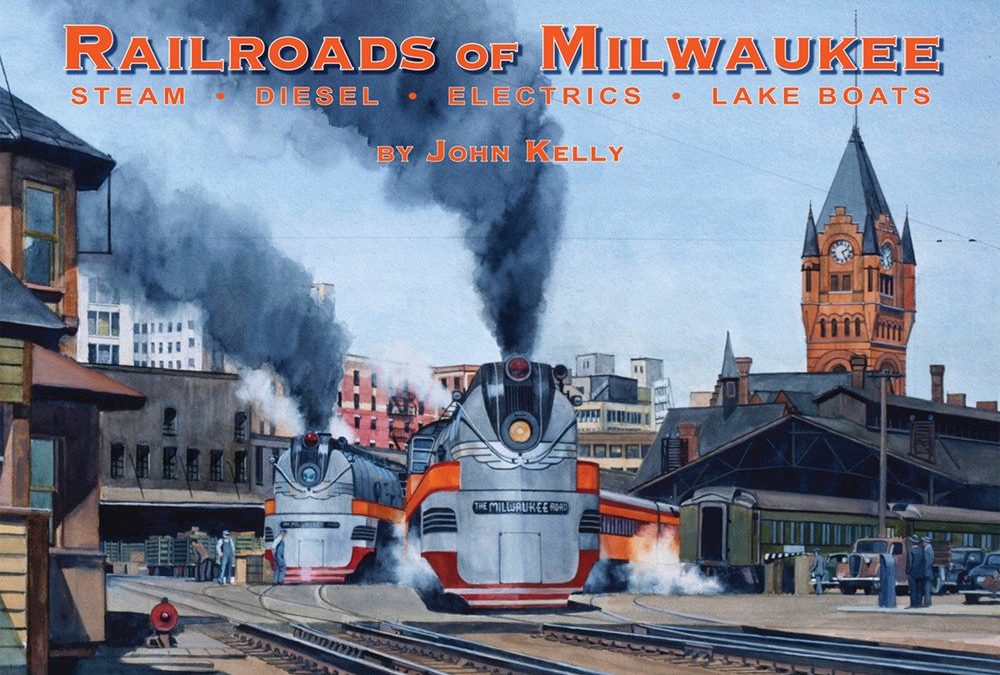
In this new 264-page book, 68 pages of which are in full color, author John Kelly explores the fascinating history of the city’s railroads, starting with the Milwaukee & Waukesha in 1847. By 1873 the Milwaukee & St. Paul Railway–later the Chicago, Milwaukee, St. Paul & Pacific (“The Milwaukee Road”) opened a line to Chicago and the railroad was on its way.
The Milwaukee Shops and the Hiawatha legend, Skytops and Super Domes, and the story behind designer Brooks Stevens, are also featured. Kelly supplies copious data on not only the Milwaukee Road, but also the Chicago & NorthWestern’s freight and passenger service, including the 400 fleet. Kelly also writes about the Chicago North Shore and Milwaukee Railroad, America’s Fastest Interurban, the Skokie Valley Route and Electroliners. In the Milwaukee Electric Railway & Light Company section, he reviews streetcars, interurbans and trackless trolley buses.
With the inclusion of the Lake Boats, the Pere Marquette, Chesapeake & Ohio, and Grand Trunk Western RR’s also come into the picture. In addition the book covers the Beer Line and the breweries, Milwaukee’s meatpacking industry, Milwaukee’s railroad stations and freight yards–a recipe for some great railroad reading.
Generously illustrated with 135 color and 362 black and white photos, maps and drawings, this limited edition hardcover volume will be a treasured keepsake for your library.
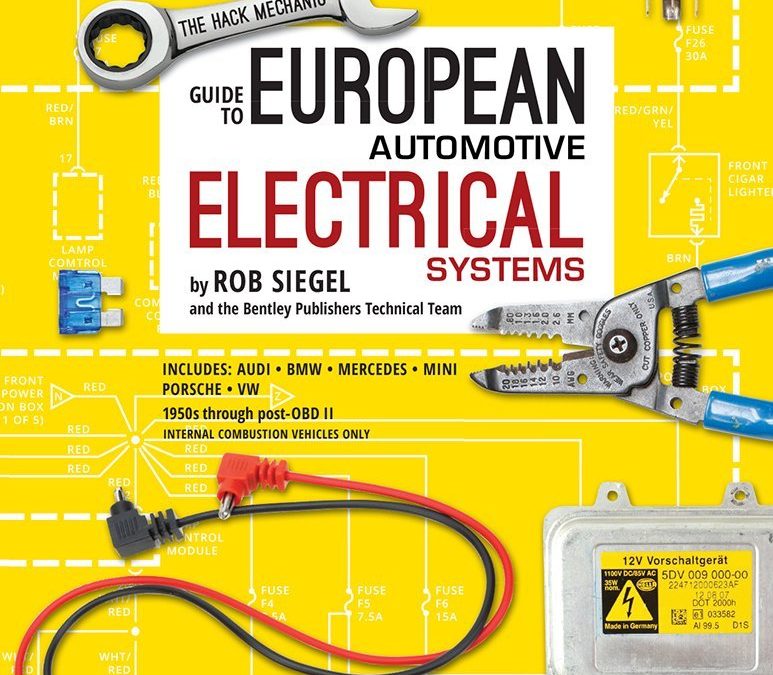
Electrical issues in European cars can be intimidating. The Hack Mechanic Guide to European Automotive Electrical Systems shows you how to think about electricity in your car and then take on real-world electrical problems. The principles discussed can be applied to most conventional internal-combustion-engined vehicles, with a focus on European cars spanning the past six decades.
Drawing on The Hack Mechanic’s wisdom and experience, the 38 chapters cover key electrical topics such as battery, starter, alternator, ignition, circuits, and relays. Through a practical and informal approach featuring hundreds of full-color illustrations, author Rob Siegel takes the fear-factor out of projects like making wire repairs, measuring voltage drops, or figuring out if you have a bad fuel pump relay. Essential tools such as multimeters (DVOM), oscillosopes, and scan tools are discussed, with special attention given to the automotive multimeter needed to troubleshoot many modern sensors.
You’ll get step-by-step troubleshooting procedures ranging from safely jump starting a battery to diagnosing parasitic current drain and vehicle energy diagnosis. And you’ll find detailed testing procedures for most problematic electrical components on your European car such as oxygen sensors, crankshaft and camshaft sensors, wheel speed sensors, fuel pumps, solenoids, and actuators. Reading wiring diagrams and decoding the German DIN standard are also covered.
Whether you are a DIY mechanic or a professional technician, The Hack Mechanic Guide to European Automotive Electrical Systems will increase your confidence in tackling automotive electrical problem-solving.
This book applies to gasoline and diesel powered internal combustion engine vehicles. Not intended for hybrid or electric vehicles.
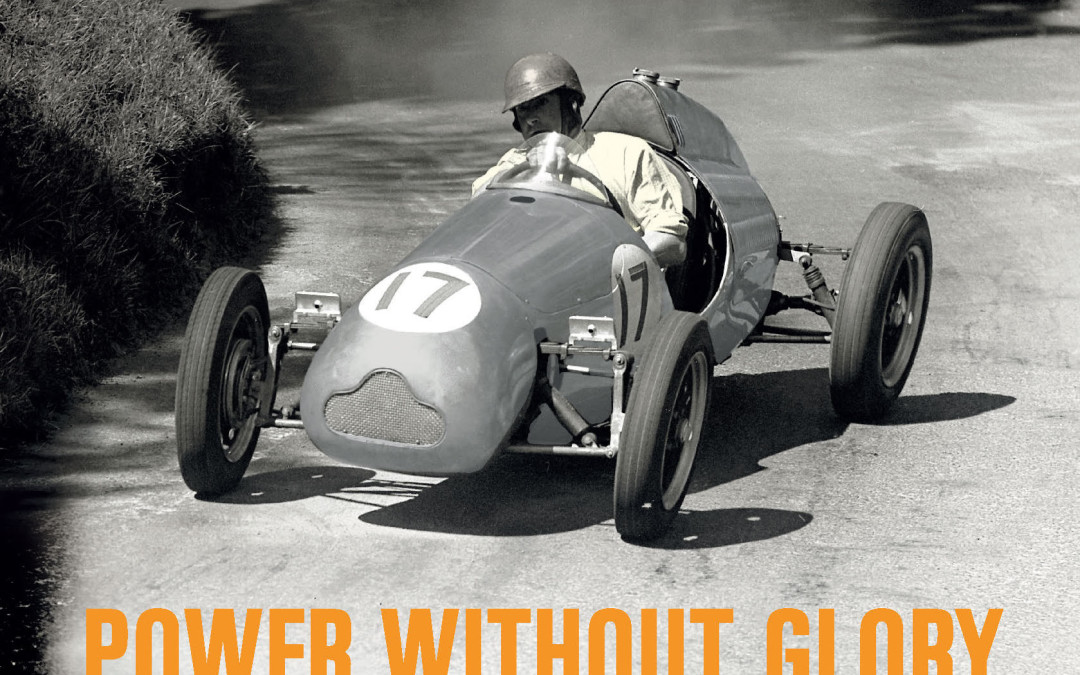
This book is a new look at the early history of the modern racing car. It explores the influences behind the first Coopers including V-twin engined record breaking motorcycles, hillclimb and sprint specials and dirt track speedway cars. The engine and chassis designs and the racing and hillclimbing of the early post-war years are described and illustrated by hundreds of previously unpublished photographs and drawings.
The pedigree of the modern racing car is usually considered to have originated with the classic marques of Europe. In this book, the author suggests that the clearest line of descent started before World War 1 with the ‘boy’ racers of California and was developed between the wars by the ‘special’ builders of England. In building their first car in 1946, Charles and John Cooper were strongly influenced by these antecedents. When they mated their offspring with JAP motorcycle engines a new breed emerged. Motor racing was never to be the same again.
Power Without Glory is printed four-colour on 150gsm satin-coated paper and is hard-back bound with a laminated colour jacket. There are 352 pages, 254 x 203mm, and 300 colour or duotone racing, car, engine and document images. The photos have come from some of the very best photographers including the collections of Guy Griffiths, Louis Klemantaski, Autocar, Motor and Motor Sport.

“THE GOLDEN AGE OF AVIATION SERIES takes a look at the respective airplane manufacturer from start-up (and before) through the struggling years of the Great Depression through the end of World War II and beyond to the postwar boom/bust. This series is a compilation featuring the combined research and writings of Drina Welch Abel, Alan Abel, and the late Paul Matt. The 3-view scale drawings used in our Golden Age books have been reviewed, acclaimed and praised by the aviation press in every continent of the world! CESSNA’s GOLDEN AGE takes a look at Clyde Cessna and nephew Dwane Wallace, longtime Cessna President, and the Cessna Aircraft Company from the early 1900s, through the struggling years of the Great Depression, through World War II to the post-war years.
It includes Cessna’s biographical information and details the people, facilities and manufacturing operations of Cessna during the Golden Years. Emphasis is given to Cessna Primary Gliders, Cessna Airmasters, Cessna T-50 Bobcats, Waco CG-4A Gliders (Cessna built), and Cessna 120/140 airplanes. Other Cessna models are also included. There are several factory photos of the Cessna plant during the Golden Years, among the book’s 180 photos and many illustrations, including 3-view airplane scale drawings.
”
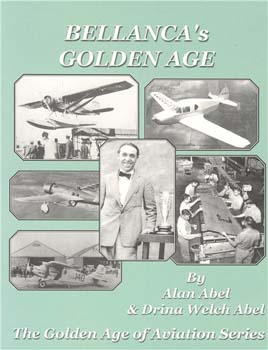
BELLANCA’s GOLDEN AGE is a new book included in The Golden Age of Aviation Series. Book Reviews for The Golden Age of Aviation Series: Smithsonian’s Air & Space: “Archival photos and technical drawings abound.” American Aviation Historical Society: “…details the people, facilities and manufacturing operations.” EAA’s Sport Aviation: “…progressively tells the events and details of these aircraft.” Skyways: “Your new series is a hit of the first order!” SR Batteries: “…just wonderful reading!” General Aviation News: “…books ARE A MUST FOR AVIATION BUFFS.” THE GOLDEN AGE OF AVIATION SERIES is being published to commemorate this year’s 100th Anniversary of Flight (2003), and presents an historical look at Aviation’s Golden Years through detailed and meaty text, numerous original photos, many of which have never been published before now, original magazine advertisements of the era, and internationally acclaimed 3-view Scale Drawings. This new series of books highlights a number of airplane manufacturers during the 1900s through 1950. THE GOLDEN AGE OF AVIATION SERIES takes a look at the respective airplane manufacturer from start-up (and before) through the struggling years of the Great Depression through the end of World War II and beyond to the postwar boom/bust. This series is a compilation featuring the combined research and writings of Drina Welch Abel, Alan Abel, and the late Paul Matt. The 3-view scale drawings used in our Golden Age books have been reviewed, acclaimed and praised by the aviation press in every continent of the world! BELLANCA’s GOLDEN AGE Traces G.M. Bellanca coming from Sicily to America as a teenager in 1911 through his 42 years of continuous airplane manufacturing operations. He did more for aviation than any other single individual during aviation’s first 100 years, bar none! This is the ONLY BOOK that has ever captured Bellanca’s complete and lengthy story. Details the beginnings of the air transportation system over great distances. Details the first ten flights over the Atlantic and the first flight over the Pacific. Tells never-before-told stories of Charles Lindbergh, Clarence Chamberlin and many other Golden Age personalities. Tells the complete story of the greatest airplane of the 1920s — Bellanca’s Columbia (the plane Lindbergh wanted but didn’t get). In the 1930s the government tested 209 different airplanes and found that Bellanca’s was the best regarding “efficiency.” Details Bellanca airplanes: CD, CE, CF, Wright-Bellanca 1, WB-2, Columbia, Bellanca J, TES Tandem, Pacemaker, Special J-300, Model K, Airbus/Aircruiser, C-27A, Miss Veedol, The White Falcon, Senior Skyrocket, The Flash, XSE-1, XSE-2, Bellanca Racer, Cruisair Junior, YO-50 (liaison), AT-21-BL Trainer, Cruisair Senior, Cruisemaster.

AERONCA’s GOLDEN AGE is a new book included in The Golden Age of Aviation Series. Book Reviews for The Golden Age of Aviation Series: Smithsonian’s Air & Space: “Archival photos and technical drawings abound.” American Aviation Historical Society: “…details the people, facilities and manufacturing operations.” EAA’s Sport Aviation: “…progressively tells the events and details of these aircraft.” Skyways: “Your new series is a hit of the first order!” SR Batteries: “…just wonderful reading!” General Aviation News: “…books ARE A MUST FOR AVIATION BUFFS.” THE GOLDEN AGE OF AVIATION SERIES is being published to commemorate this year’s 100th Anniversary of Flight (2003), and presents an historical look at Aviation’s Golden Years through detailed and meaty text, numerous original photos, many of which have never been published before now, original magazine advertisements of the era, and internationally acclaimed 3-view Scale Drawings. This new series of books highlights a number of airplane manufacturers during the 1900s through 1950. THE GOLDEN AGE OF AVIATION SERIES takes a look at the respective airplane manufacturer from start-up (and before) through the struggling years of the Great Depression through the end of World War II and beyond to the postwar boom/bust. This series is a compilation featuring the combined research and writings of Drina Welch Abel, Alan Abel, and the late Paul Matt. The 3-view scale drawings used in our Golden Age books have been reviewed, acclaimed and praised by the aviation press in every continent of the world! AERONCA’s GOLDEN AGE progressively details the events leading to the Aeronautical Corporation of America, from the early 1920s, through the Great Depression, the disastrous flood of 1937, World War II and beyond. Book includes biographical information on the founders of Aeronca, and details the people, facilities and manufacturing operations of Aeronca during the Golden Years. Emphasis is given to Aeronca’s C-2, C-3, Model K, Model L, 7AC Champ, and 11AC Chief. ALL Aeronca’s models are discussed. Includes factory photos. This book has much more information than the previously published book, Aeronca, The Best of Paul Matt.
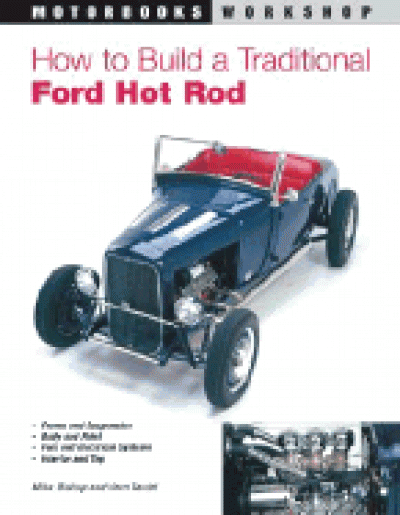
Build your own flathead roadster just as it would have been built in the 1950s! Using a 1929 Ford Model A, this guide follows its construction from start to fantastic finish.
Bishop begins with a wealth of expert advice on planning your project, finding traditional parts, and acquiring the tools, time, space, and services needed. From frame, front suspension and steering, to brakes, engine and transmission, Bishops expert approach is fully illustrated with specially commissioned photos and line drawings.
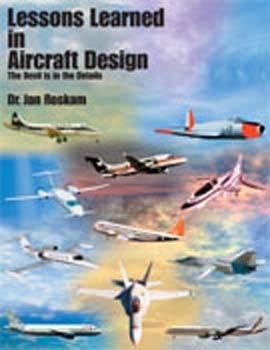
Lessons Learned in Aircraft Design presents examples of lessons learned in airplane design since 1945. The lessons are largely drawn from the aircraft design and accident/incident literature. The author hopes that this book will contribute to the safety of flight.
A brief summary is presented of safety statistics, certification and operational standards, safety standards and their relationship to design in general.
In each case the discussion starts with the recounting of a problem which arose. Then the probable cause of the problem is identified, one or more solutions are indicated and finally a lesson learned is formulated.
Since many designers will eventually become program managers, it is instructive to recount some trials and tribulations associated with marketing, pricing and program decision making.
As is shown by many examples in this book, safety of airplanes often starts in the design phase. However, sometimes the certification process itself, for whatever reason, fails.
This book will be useful to practicing design engineers, test pilots and program managers. It can be used in the classroom to help in the education of future aircraft designers and engineering/maintenance personnel.
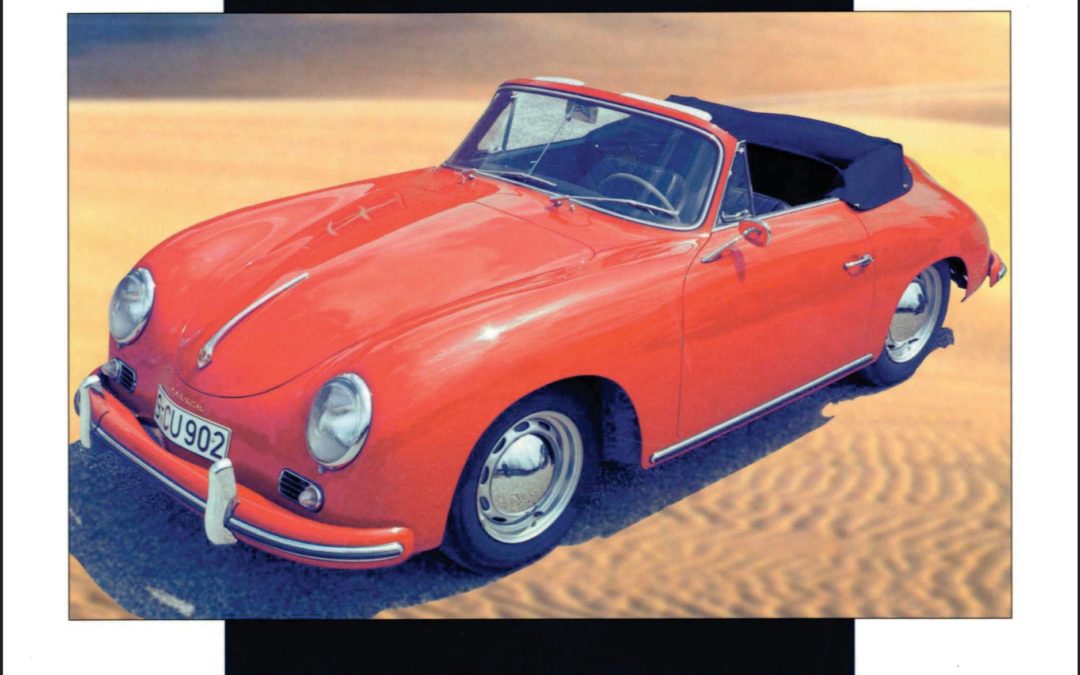
A portfolio of contemporary articles drawn from three continents leads us through the fascinating development of the Porsche 356 – the car that started the Porsche dynasty. Included are road and comparison tests, new model introductions, a road research report, plus full specifications and performance data. Advice is also given on acquiring a pre-owned example.
Models covered include:
• 356A
• 356B
• 356C
• S
• SC
• SS
• GS
• 1500
• 1600
• 2L
• Carrera
• Super
• 75
• 90
• Coupe & Convertible
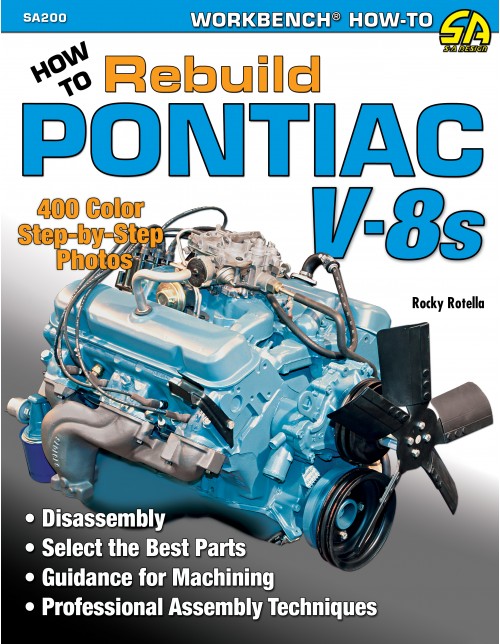
Under the guidance of Semon “Bunkie” Knutson, John DeLorean, and a host of creative and innovative people, Pontiac established its own identity and distinct V-8 engine platform under the GM banner. In 1955, Pontiac’s V-8 started out at a meager 287ci, but it was an auspicious beginning to an illustrious line of engines. The potent power plant grew and evolved over the coming decades; it included the 389 Tri-Power, 421, Ram Air IV 400, 428, and the Super Duty 455. These V-8s powered a number of legendary cars: the GTO, Firebird, Trans-Am, and many others. This Workbench series book will guide proud owners who want to rebuild these engines and give them a new lease on life.
Long-time Pontiac expert and magazine writer Rocky Rotella guides the reader through the entire rebuild process. Drawing on his vast experience, Rotella uses detailed captions and explanatory photos to show each crucial step of the disassembly, inspection, machine work, parts selection, assembly, and break-in process. This book instructs the reader how to skillfully pull the engine and prevent damage to the car. It documents how to carefully inspect the components for problems and fix these issues that could spell doom for a newly rebuilt engine. Finding a reputable and professional machine shop that specializes in Pontiac engines is discussed, as well as aftermarket parts and OEM parts interchange for high performance so you can select the best parts for a particular engine. All essential machine shop procedures are covered in detail. Inspection and pre-assembly are thoroughly explained.
Most important, as with all Workbench series titles, the methodical and practical approach provides the insight and vital information required for the task. This, the first-ever book dedicated to rebuilding the Pontiac V-8 engine, is a valuable addition to any Pontiac enthusiast’s library.

School buses, fire trucks and custom coaches
Donald Martin Brockway founded the Crown Carriage Company in 1904, the same year that Henry Ford started Ford. With no engineering department at this time, Brockway would draw the outlines of the vehicles in the dirt on the production floor as they were conceived. This informative story of Crown’s various endeavors from 1900s horse-drawn wagons through early 1990s alternative fueled buses is chronicled here and highlighted with vintage photographs and factory memorabilia including advertising items, coach emblems, and production statistics. Not to be left out are custom built coaches for such companies like Lockheed as mobile missile tacking station, Art Linkletter mobile video coaches, and the first air conditioned tour coach in Hawaii. The company built one of the largest fleets of fire trucks in the nation for the Los Angeles City and County fire departments and other agencies, and sent high quality custom built vehicles as far away as places like Juneau, Alaska, South America and the Middle East
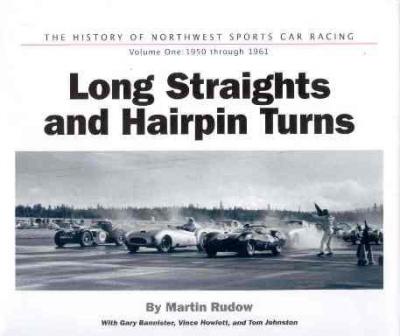
UPDATED SECOND EDITION
Relive those exciting days when many of the world’s greatest drivers competed on such Northwest road racing circuits as Shelton Airport, Pacific International Raceway, Vanport and Westwood. Spectators turned out by the tens of thousands , often outdrawing every other local sporting attraction of the time.
Starting with the first 4 cylinder races on abandoned airports and wrapping up with three big-time professional racing circuits in place at the conclusion of the 1961 season,Long Straights and Hairpin Turns takes the reader through a wonderful decade where skinny-tired cars and their t-shirt wearing drivers raced for little more than fun and trophies.























